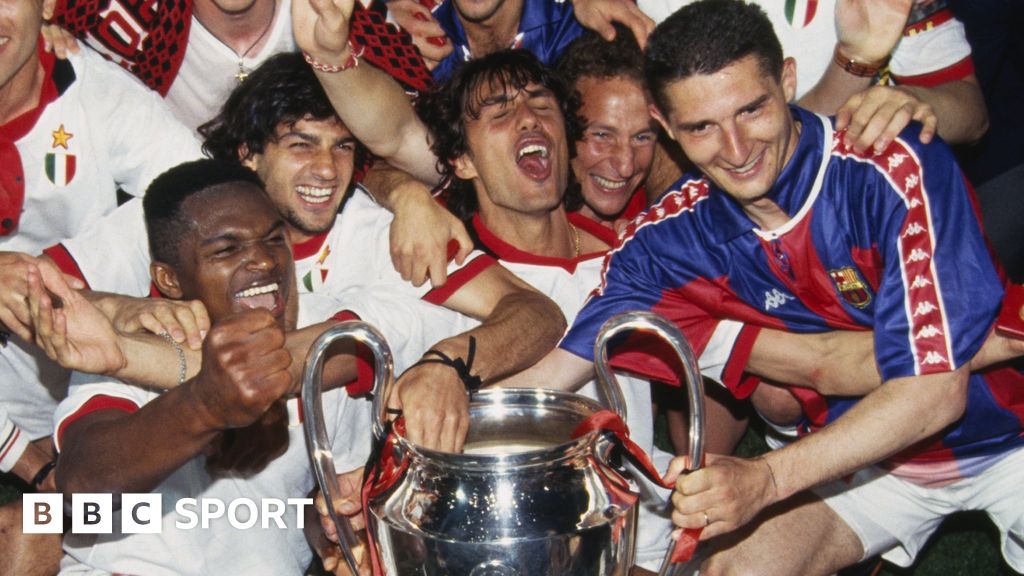Beyond stress relief and cognitive training, the Mind Room also focused on improving players’ reaction speeds by using response time tests. Participants were presented with two buttons and a pair of bulbs, clicking the left-hand or right-hand button if the corresponding bulb lit up. Flashing arrows – often pointing in the opposite direction to the light which was on – were used to add a greater degree of difficulty to the examination.
While the concept sounds basic, reducing the time it takes for players to respond to rapidly changing on-pitch situations – even by a few tenths of a second – was seen as yet another way in which Milan could extend the careers of stalwarts such as Alessandro Costacurta and Paolo Maldini, who played until they were 41.
“You can’t train 37-year-old players to become physically faster, but you can train them to become faster in analysing situations,” Demichelis says.
“If they can process data more quickly, they can make quicker decisions. That’s why we were able to keep players going.”
Clarence Seedorf was the embodiment of this ethos. Nicknamed ‘The Professor’ by team-mates, Seedorf regularly visited the Mind Room, which was seen as the psychological ‘station’ within a wider physical and mental ‘circuit’, otherwise known as the Milan Lab. The Dutchman’s devotion to self-development would pay off in more ways than one.
Demichelis explains: “The general director of the Milan Lab said to him, ‘Wow, you’re 31, but fitness-wise you’re 26. Your biological age is much, much younger.’
“Seedorf said, ‘Give me that print out’. He went to the CEO and said, ‘Listen to what your lab is saying about me. I am 26, biologically speaking, so extend my contract for four more years.’ And they did!”
Seedorf’s age-defying physiology was perhaps aided by the daily six-minute health checks Demichelis introduced, as part of his role as the club’s scientific coordinator. Combining GPS data with physiological measurements such as heart rate variability, the checks were used to develop a ‘risk scoring’ system. By monitoring changes to a player’s score against a baseline, Demichelis was able to indicate potential susceptibility to injury and proactively apply treatment.
For example, a 10% drop in a player’s score would generate a yellow flag, with a 20% reduction resulting in an orange flag. A decrease of 30% would signal a red flag and preventative treatment in the Mind Room.
According to Demichelis, the methods he helped to introduce contributed to Milan reducing soft tissue injuries by 91% during his time at the club. It is a striking statistic made possible in part by the support the Mind Room received at both boardroom and managerial levels.
“I had the players on my side because we had the club on our side.,” says Demichelis. “We had the coach on our side because he believed in our philosophy. At the time, he told the players, ‘You don’t play football with your foot. You play football with your brain.’ It’s a big asset for a sport psychologist.”
Ancelotti and Demichelis’ departure in 2009 effectively ended the Mind Room’s use at Milanello, but the Italian pair established an equivalent base at Stamford Bridge after joining Chelsea.
Petr Cech was among a number of players who jumped at the chance of benefitting from the methods Demichelis deployed in Milan, which professor of psychology Marc Jones describes as genuinely innovative.
“The Mind Room was breaking new ground in terms of its integration into the training environment,” says Jones, who has worked with a number of football clubs.
“The fact there was a physical presence within Milan’s training ground was, without doubt, the exception rather than the rule.”
Jones namechecks John Syer and Chris Connolly – who both provided psychological support for Tottenham players in the early 1980s – as quasi-forerunners of Demichelis, but you have to look back to 1958 and Brazil’s World Cup-winning psychologist Joao Carvalhaes to find a similarly decorated example of a laboratory dedicated to cognitive skills training.
While Milan’s trophy haul goes some way to illustrating the impact of the Mind Room, the public testimony of the managers who backed Demichelis’ brainchild is perhaps as telling. In his book ‘The Immortals’, Sacchi’s appreciation of the laboratory is such that he describes Demichelis as “a psychologist whom I needed more than the players”. Ancelotti, meanwhile, has spoken of the “value” Demichelis added to Chelsea “with his experience of the Milan Lab”.
The appreciation appears to be echoed by the players Demichelis worked with. In 2014, after his appointment as Milan manager, Seedorf lured his former colleague back to the San Siro.
The reunion was short-lived – Seedorf’s managerial reign ended after four months – but the Mind Room’s long-term legacy is well established. Epitomising the innovation that characterised Milan’s off-pitch and on-pitch operation during the 1990s, the root of its success lay as much in an age-old premise as it did on modern technology, according to its founder.
“We improved skills that are very well defined: recovery, attention, stamina, speed in analysing situations and making decisions,” says Demichelis. “The difference is that our players were able to deploy these skills under pressure.
“As a player, you need to have this ability if you’re going to take a penalty in the World Cup final.”



